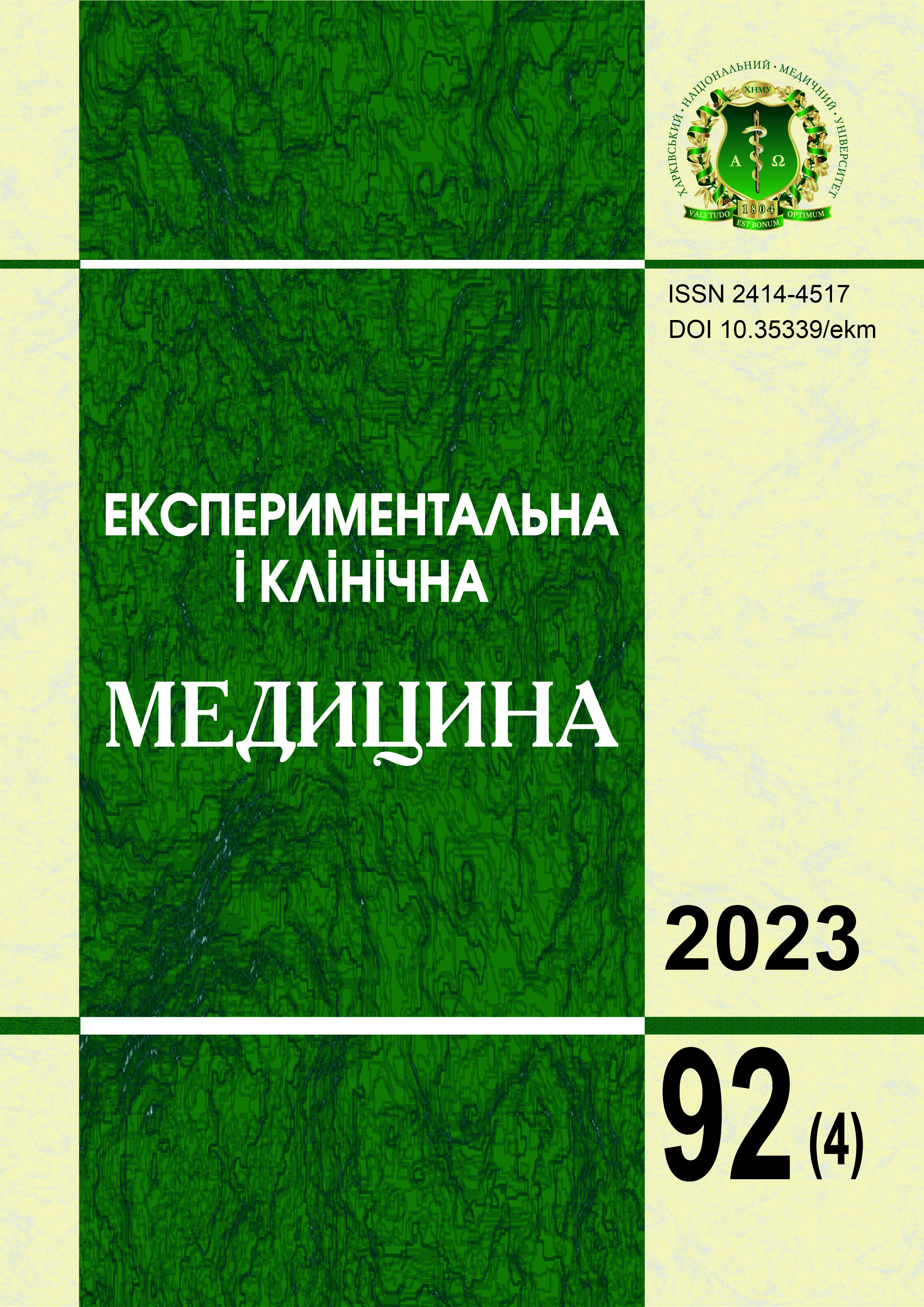Abstract
The article presents the results of a comparative analysis of the responses of war victims to questions of the non-specific "ShortForm-36 Health Status Survey" (SF-36) questionnaire to determine the quality of physical and mental life at the time of filling out the questionnaire. The SF-36 questionnaire is one of the most common methods of measuring health-related quality of life and shows general well-being and the degree of satisfaction with aspects of a person's life that are affected by health. The vast majority of examined men injured as a result of hostilities were aged 30–49. It was found that against the background of a decrease in all indicators on the scales of the physical components of health, the most pronounced changes were recorded in the indicators of general health and role functioning caused by physical condition. In the psychological domain, the most pronounced changes were recorded in such components as mental health, vital activity and social functioning. A number of correlations were established between quality of life indicators in victims of hostilities. The closest probable positive correlation in men injured as a result of hostilities was established between physical functioning and role functioning caused by emotional state (r=+0.64; p<0.05). A positive correlation was also found between general health and physical functioning (r=+0.43; p<0.05), between general health and role functioning caused by emotional state (r=+0.34; p<0.05), a probable positive relationship between mental health and life activity (r=+0.34; p<0.05) and pain intensity (r=+0.42; p<0.05). The correlation between role functioning caused by emotional state and role functioning caused by physical state was negative and amounted to -0.37 (p<0.05).
Keywords: SF-36, physical health, mental health.
References
Schalok RL. The concept of quality of life: what we know and do not know. Journal of Intellectual Disability Research. 2004;48(3):203-16. DOI: 10.1111/j.1365-2788.2003.00558.x. PMID: 15025663.
Romanenko YaM, Liannoi YO. Methodology of Research of Quality of Life of Surgical Patients in the Process of Physical Rehabilitation. Pedagogy, psychology and medico-biological problems of physical education and sports: a collection of scientific works. 2011;4:134-7. [In Ukrainian].
Sichkaruk IM, Yagenskyi AV. Assessment of quality of life in modern medical practice. Journal internal of medicine. 2007; 3:27-32. [In Ukrainian].
Lekhan VM. Quality of life of patients with chronic diseases and the disabled: general patterns. Herald of social hygiene and health care organization of Ukraine. 2004;3:20-4. [In Ukrainian].
Jelsma J, Maclean E, Hughes J, Tinise X, Darder M. An investigation into the health-related quality of life of individuals living with HIV who are receiving HAART. AIDS Care. 2005;17(5):579-88. DOI: 10.1080/09540120412331319714. PMID: 16036244.
Motl RW, McAuley E, Snook EM, Gliottoni RC. Physical activity and quality of life in multiple sclerosis: intermediary roles of disability, fatigue, mood, pain, self-efficacy and social support. Psychol Health Med. 2009;14(1):111-24. DOI: 10.1080/13548500802241902. PMID: 19085318.
Campolina AG, Ciconelli RM. SF-36 and the development of new assessment tools for quality of life. Acta Reumatol Port. 2008;33(2):127-33. PMID: 18604180
Lins L, Carvalho FM. SF-36 total score as a single measure of health-related quality of life: Scoping review. SAGE Open Med. 2016;4:2050312116671725. DOI: 10.1177/2050312116671725. PMID: 27757230.
Pelle AJ, Kupper N, Mols F, de Jonge P. What is the use? Application of the short form (SF) questionnaires for the evaluation of treatment effects. Qual Life Res. 2013;22(6):1225-30. DOI: 10.1007/s11136-012-0266-8. PMID: 22975926.
Hopman WM, Verner J. Quality of life during and after inpatient stroke rehabilitation. Stroke. 2003;34(3):801-5. DOI: 10.1161/01.STR.0000057978.15397.6F. PMID: 12624313.
Lins L, Carvalho FM. SF-36 total score as a single measure of health-related quality of life: Scoping review. SAGE Open Med. 2016;4:2050312116671725. DOI: 10.1177/2050312116671725. PMID: 27757230.
Ware JE Jr, Sherbourne CD. The MOS 36-item short-form health survey (SF-36). I. Conceptual framework and item selection. Med Care. 1992;30(6):473-83. PMID: 1593914.

This work is licensed under a Creative Commons Attribution-NonCommercial-ShareAlike 4.0 International License.

